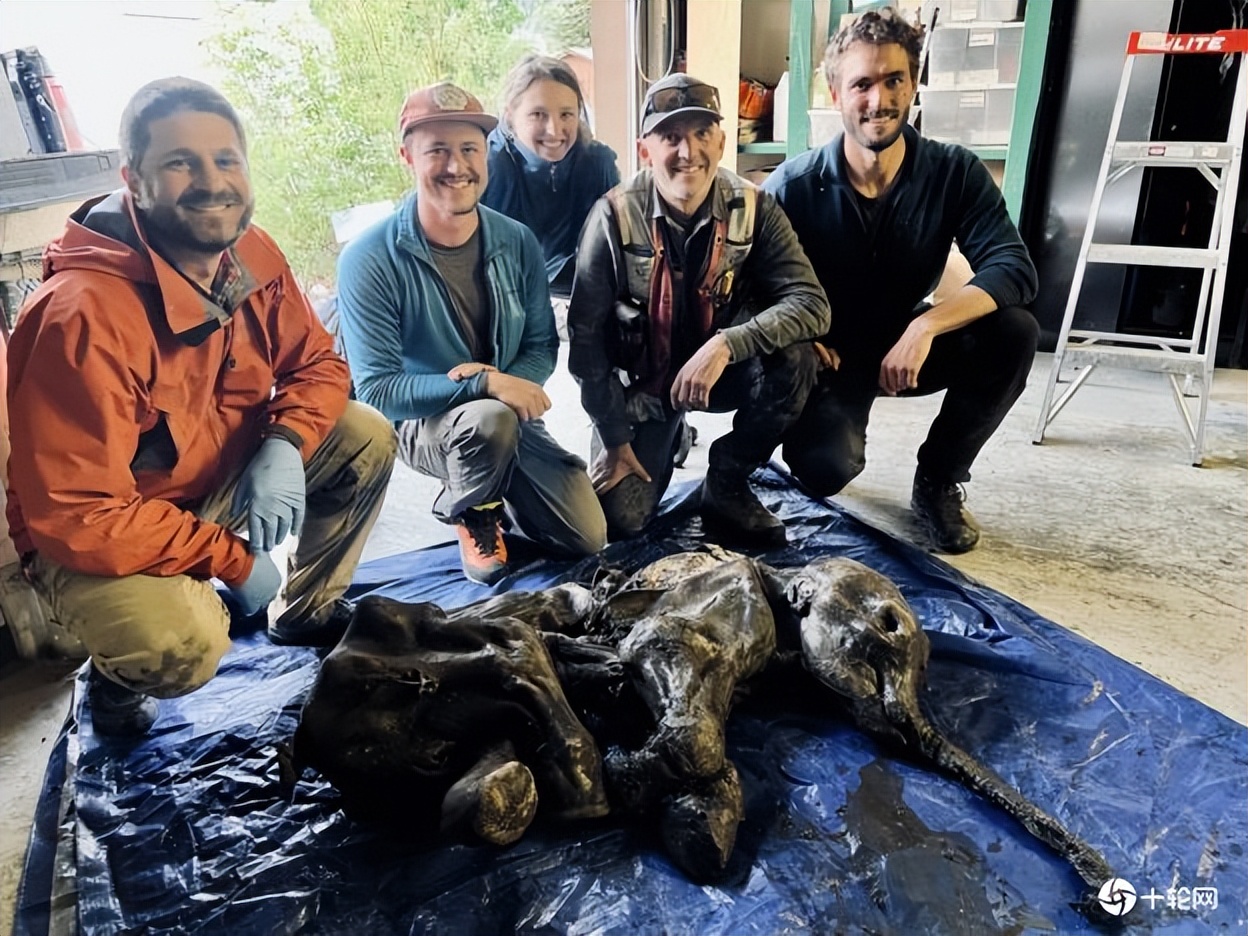
The recent Yukon region of northern Canada announced the discovery of almost intact mummies of the mammoth 35,000 years ago. This small mammoth, which lived during the Ice Age, is only a month old and still has a few pieces of grass in its stomach that it ate before. Due to the climate and specific conditions of the Ice Age, its skin, hair, nails and intestines were successfully preserved.
Sleeping little mammoth mummies are unearthed
Young miners in Canada's northern Yukon, Canada, started their loaders to dig up something shiny in the permafrost of the Klondike goldfield on June 21. But shortly after excavation, the front end of the loader hit a dark, frozen object.
He immediately called his boss and then contacted the paleontologist he knew. Later he learned that the clump he had dug up turned out to be the mummy of a small mammoth.
Being part of the recovery of Nun cho ga, the baby woolly mammoth found in the permafrost in the Klondike this week (on Solstice and Indigenous Peoples’Day!), was the most exciting scientific thing I have ever been part of, bar none.https://t.co/WnGoSo8hPkpic.twitter.com/JLD0isNk8Y
—Prof Dan Shugar (@WaterSHEDLab)June 24, 2022
After receiving a notice from the miners, the Yukon archaeologists set out to assist with the follow-up processing, placing the mummy of the baby mammoth on a blue tarp.
Frozen for 35,000 years
Grant Zazula, a paleontologist in Canada's Yukon, excitedly says it's one of the rarest ice age animal mummies in the world, with the baby mammoth intact and a female elephant frozen for about 35,000 years.
"It was perfect and beautiful too. It has a torso and tail, small ears, and a small, long elephant trunk that allows it to roll leaves and eat. Zazura said.
Sticky skin, hair... And the intestines!
Zazura described the discovery as "the most significant discovery in North American paleontology" because the baby mammoth still has intact skin and hair.
Dan Shugar, a geologist involved in the excavation of the baby mammoth, also shared on Twitter how he felt surprised to see the baby mammoth. "Its toenails, skin, hair, torso and intestines have been incredibly preserved!"
The Government of the Yukon Territory of Canada also declared the baby mammoth to be the most complete mammal mummy ever found on the mainland.
The mummy mummy of the mammoth, unearthed in Siberia, Russia, in 2007, lived 42,000 years ago. Liuba is very close to the mummy of the small mammoth found in the Yukon region of Canada. (Source: Tatsushi Photo)
One that does not pay attention becomes a permafrost little life
What did this little mammoth go through before he was born? How can it be mummified? Based on the information at hand, Zazura speculated about the possible activities of the baby mammoth before it died.
The baby mammoth is about 140 cm long, only about a month old, and has several leaves in its stomach. Zazura guessed that it moved farther into the land to graze, far from its mother's sight, and it didn't take long to become trapped in the mud and outgassed, frozen in the permafrost of the Ice Age, forming a mummy.
"In that state, being trapped in the mud would be buried very quickly." Zazura added.
It is owned by the Indigenous Reservation
Since the baby mammoth is found in Tr′ondëk Hwëch′in, an Aboriginal Reservation in Canada, the baby mammoth will be owned by Dawson Indian. Peggy Kormendy, an elder of the Dawson Indian Society, recently performed a naming ceremony for the baby mammoth, naming it in the Hän language, calling it Nun cho ga, which means "big baby animal."
Komendi described the moment he saw the little mammoth, and couldn't help but exclaim: "This is amazing! When the tarp was opened instantly, I almost forgot to breathe. We must approach it with caution. ”
Roberta Joseph, Chief of the Dawson Indian Society, also said: "This discovery is significant for Dawson Indian Society, and we look forward to working with the Yukon Government to find the best way to deal with these unearthed animals in a way that promotes our traditions, culture and laws." ”
And as soon as we finished up, the skies opened to an absolute downpour with lightning, hail, mud that seemed to come from the ground upwards.pic.twitter.com/a39YHYJFFf
—Prof Dan Shugar (@WaterSHEDLab)June 24, 2022
Geologists thanked miners on Twitter for the notification and were glad to have finished the excavation of the baby mammoth before it rained heavily.
The Yukon, which contains archaeological treasures
The discovery of the baby mammoth is not the first ice age animal unearthed in the Yukon region, but has also dug up 50,000-year-old wolf mummies and giant fossils of mammoths. During the Ice Age, in addition to mammoths, the ice field was also raced by wild horses, cave lions (Panthera leo spelaea) and Bison latifrons.)
The yukon region was first marked by a gold rush. Ever since the American miner George Carmack dug gold near the Londeck River in the spring of 1870, tens of thousands of people have sprung up to pursue their dreams of gold. The gold rush lasted more than 30 years before the fever subsided, leaving people in the empty city of Dawson.
There are still a few mining companies left in the Yukon, and Treadstone Mining, the found mummy of a baby mammoth, works closely with the government and archaeologists. Many archaeological discoveries in the Yukon rely on these mining companies for immediate discovery and notification.
Zazura felt this way: "I don't know where else in the world we have in the mining industry and the archaeological community. At least in the Yukon, this collaboration has been smooth. ”
"Not only are they willing to help us with archaeology, they are willing to give us the fossils they find, and they are excited to get involved in archaeology and work with archaeology colleagues, like real scientists." Zazura said.
(Source: Prof Dan Shugar)